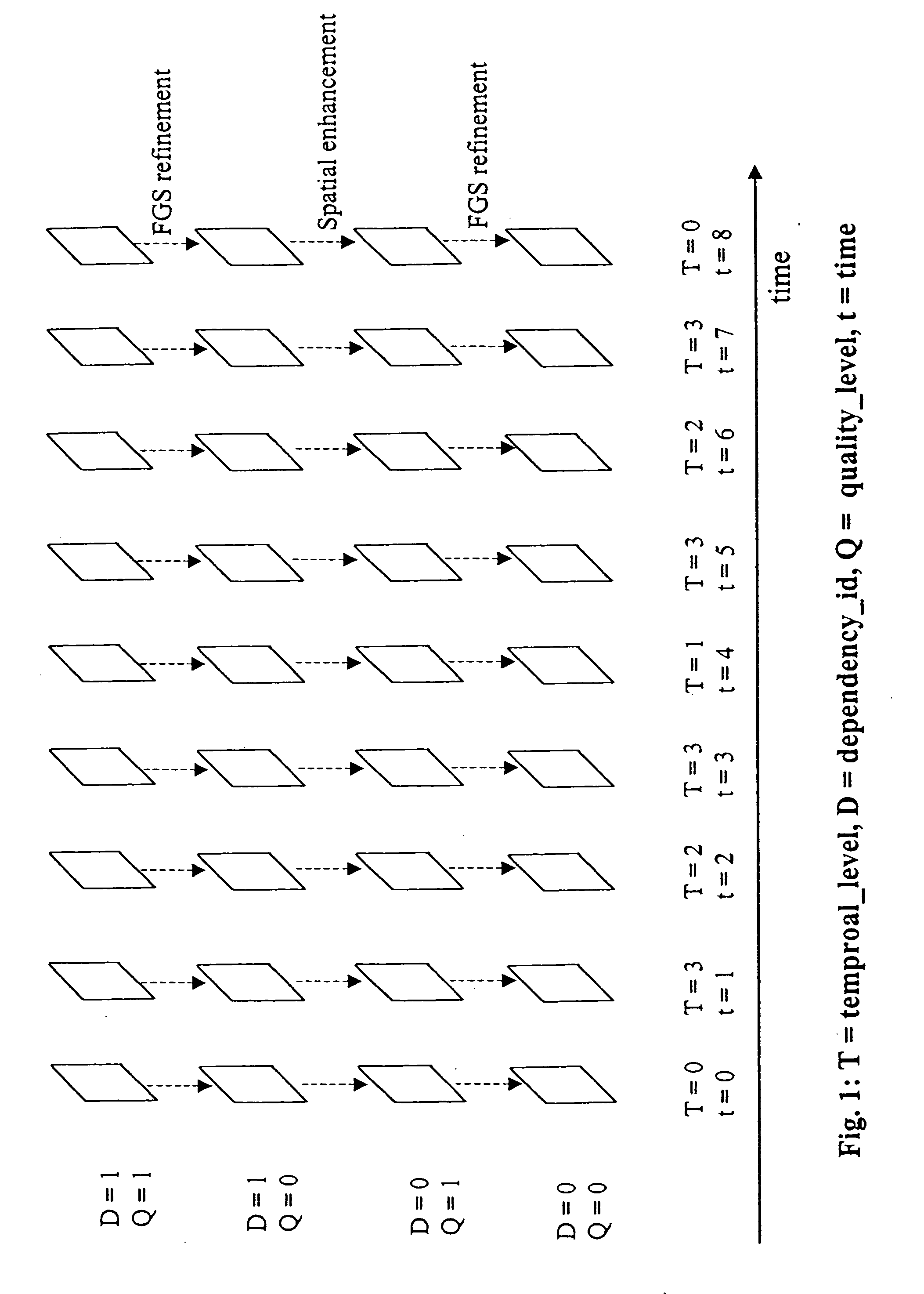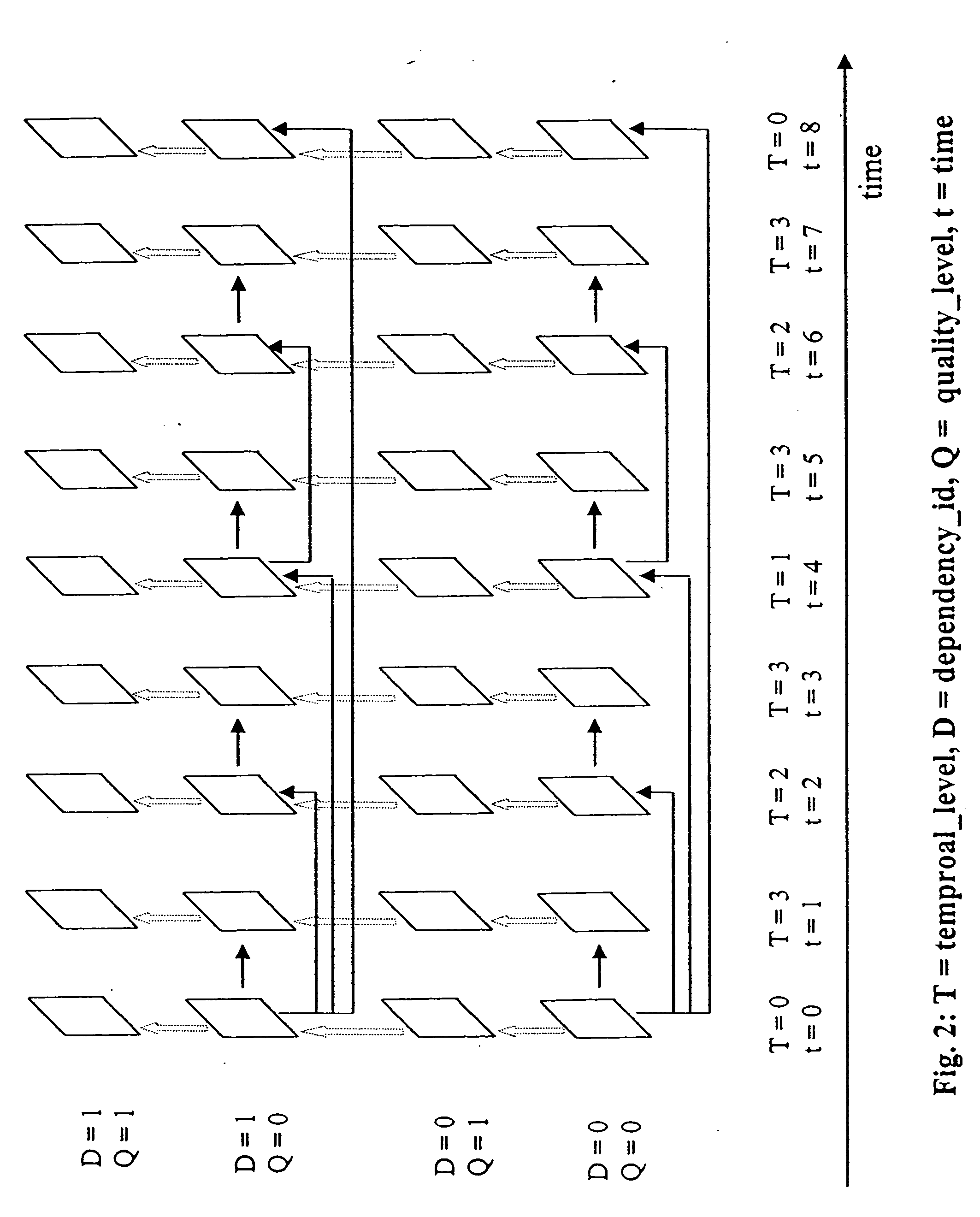Error resilient mode decision in scalable video coding
a scalable video and mode decision technology, applied in the field of scalable video coding, can solve the problems of limited end-to-end quality of service for packet-switched data communication networks, data packets may be discarded, and additional bottlenecks for wireless networks in end-to-end quality of service, and achieve the effect of increasing the reproduced video quality
- Summary
- Abstract
- Description
- Claims
- Application Information
AI Technical Summary
Benefits of technology
Problems solved by technology
Method used
Image
Examples
Embodiment Construction
[0040] The present invention provides a mechanism to perform macroblock mode selection for the enhancement layer pictures in scalable video coding so as to increase the reproduced video quality under error prone conditions. The mechanism comprises the following elements: [0041] A distortion estimator for each macroblock that reacts to channel errors such as packet losses or errors in video segments that takes potential error propagation in the reproduced video into account; [0042] A Lagrange multiplier selector according to the estimated or signaled channel loss rates for different layers; and [0043] A mode decision algorithm that chooses the optimal mode based on encoding parameters (i.e. all the macroblock encoding parameters that affect the number of coded bits of the macroblcok, including the motion estimation method, the quantization parameter, the macroblock partitioning method), the estimated distortion due to channel errors, and the updated Lagrange multiplier.
[0044] The ma...
PUM
 Login to View More
Login to View More Abstract
Description
Claims
Application Information
 Login to View More
Login to View More - R&D
- Intellectual Property
- Life Sciences
- Materials
- Tech Scout
- Unparalleled Data Quality
- Higher Quality Content
- 60% Fewer Hallucinations
Browse by: Latest US Patents, China's latest patents, Technical Efficacy Thesaurus, Application Domain, Technology Topic, Popular Technical Reports.
© 2025 PatSnap. All rights reserved.Legal|Privacy policy|Modern Slavery Act Transparency Statement|Sitemap|About US| Contact US: help@patsnap.com



